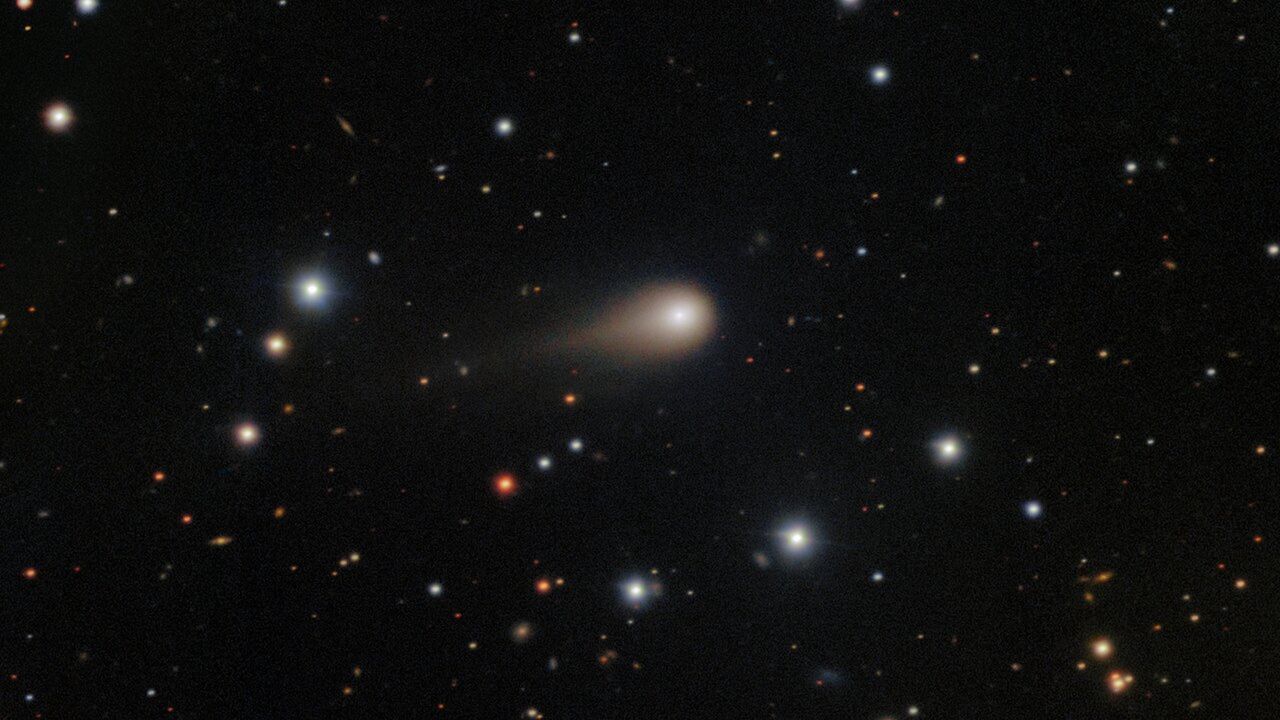¿Qué es 3I/ATLAS?
- 3I/ATLAS es un cometa interestelar, esto es, un objeto que viene del espacio fuera de nuestro sistema solar. esa.int+2en.wikipedia.org+2
- Fue descubierto el 1 de julio de 2025 por el sistema ATLAS (Asteroid Terrestrial-impact Last Alert System) en Chile. en.wikipedia.org+2planetary.org+2
- Su nombre completo también es C/2025 N1 (ATLAS). planetary.org+2en.wikipedia.org+2
- Tiene una trayectoria hiperbólica (es decir, no está ligado gravitacionalmente al Sol) lo que confirma que se origina fuera del sistema solar. en.wikipedia.org+2planetary.org+2
Características y datos interesantes
- 3I/ATLAS alcanzará su perihelio (el punto más cercano al Sol) alrededor del 29 de octubre de 2025, llegando a aproximadamente 1.4 unidades astronómicas del Sol (más cerca que Marte pero no tan cerca como la Tierra) esa.int+4NASA Science+4Space+4
- En cuanto a su cercanía a la Tierra, no representará amenaza: su aproximación mínima a la Tierra será de alrededor de 1.8 unidades astronómicas (≈ 270 millones de km) TheSkyLive+3NASA Science+3en.wikipedia.org+3
- Su núcleo estimado está en un rango de 0.32 a 5.6 km de diámetro, aunque hay incertidumbre considerable. en.wikipedia.org+2planetary.org+2
- En su coma (la envoltura de gas y polvo que rodea al núcleo), se ha detectado abundancia de CO₂ (dióxido de carbono), con cantidades menores de agua (H₂O), monóxido de carbono (CO) y OCS (carbonilo sulfuroso) esa.int+3en.wikipedia.org+3planetary.org+3
- Observaciones del telescopio espacial James Webb (JWST) han ayudado a analizar su composición infrarroja. esa.int+2planetary.org+2
- Un aspecto curioso: aunque muchos cometas emiten una tonalidad verde debido a moléculas como C₂ al activarse con el calor solar, en 3I/ATLAS el brillo verde observado tiene comportamientos extraños dado que no se detecta tanta molécula C₂ como en cometas típicos. IFLScience+3ScienceAlert+3planetary.org+3
- También se ha observado polarización negativa extrema en la luz que refleja, un efecto aún bajo estudio. IFLScience
